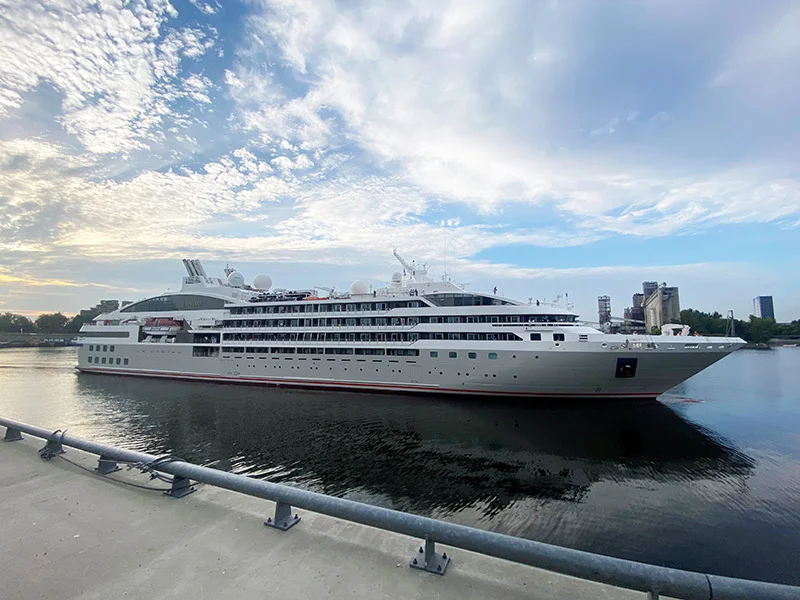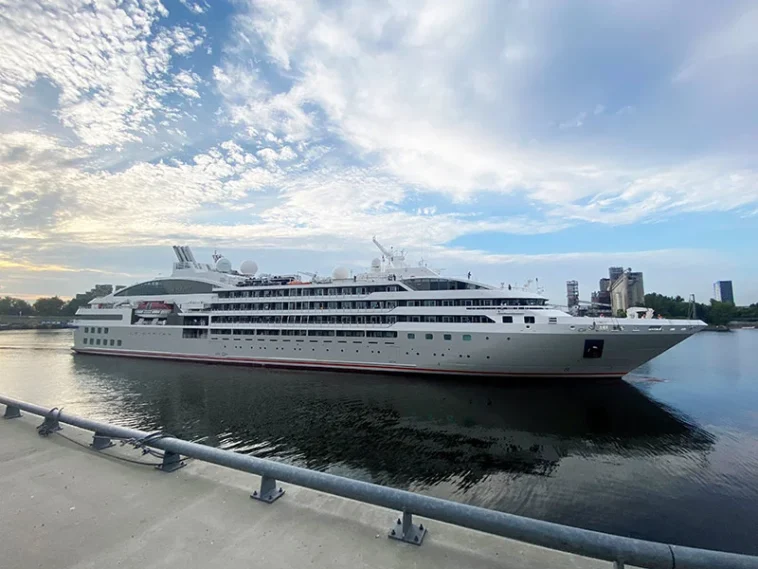
Digital Delays and the Changing Face of Travel Journalism
In today’s fast-paced online era, we sometimes find ourselves waiting for responses from highly regarded sources like www.travelandleisure.com, an experience that can feel both frustrating and revealing. This waiting period brings to light a host of issues related to modern travel journalism and the challenges faced by both the readers and the writers trying to provide up-to-date information. While many of us relish the thrill of new travel ideas, we may also wonder how much trust we should place in digital publications when the content seems to be in perpetual delay.
The wait itself, whether for a new article or an updated review, is reminiscent of the unpredictable nature of travel. Just like planning a journey full of tricky parts and unforeseen twists and turns, the digital world has its own knotted challenges. This editorial takes a closer look at how digital delays impact our perception of travel information, and what that means for planning our next adventure.
Understanding the Changing Landscape of Travel Media Coverage
The digital transformation in travel journalism has been as dramatic as any adventure travel story. Gone are the days when printed magazines set the benchmark for quality travel advice. Today, online platforms must deliver speed, reliability, and depth, all while dealing with the unexpected delays that can occur in our technology-driven world.
At its core, waiting for an update from a trusted source speaks to bigger issues within the travel media ecosystem. With so many channels competing to provide the latest in travel news and advice, the pressure is on for websites to churn out quality content swiftly. However, this race against time is often riddled with tricky parts and tangled issues, ranging from technical difficulties to staffing challenges, which can lead to an intimidating delay in content delivery.
Issues in the Speed of Content Creation
Many factors contribute to the lag we sometimes experience in our favorite travel publications. These include:
- Technical bottlenecks during website maintenance or content database updates.
- Delays in fact-checking and verifying travel information, especially when destinations are facing rapid change.
- Editorial decisions that prioritize in-depth features over daily updates, resulting in a brief hiatus in quick-read content.
- Increased pressure to produce unique angles that differentiate one travel destination from another.
Each of these factors contributes to the overall wait time, leaving readers a bit off-kilter as they try to piece together reliable travel updates from various sources. While these glitches might seem nerve-racking, they also highlight the critical balance between producing steady, engaging content and ensuring it is accurate and insightful.
Adapting to Technological and Editorial Challenges
The digital realm is not without its challenges. Websites face not just the technical hurdles of maintaining an online presence, but also the editorial task of refining content to meet reader expectations. It’s a balancing act of timely reporting and deep-diving into narrative details.
For many content creators, the delay is not a sign of carelessness but rather an off-putting reminder of the need to get every fine point right before publishing. The approach of waiting until every subtle detail is perfected ties into the overarching idea that quality travel advice is worth the extra moment of patience, even if technological hiccups occasionally get in the way.
Finding Your Path Through a Sea of Online Travel Resources
In a world where information is abundant – yet sometimes delayed – the question becomes: how do we, as travelers, figure a path through the endless stream of travel advice? One key solution is to diversify the sources of our travel information. Instead of relying solely on well-known portals, we can broaden our horizons by exploring personal blogs, regional tourism boards, and even user-generated content on social platforms.
This strategy not only enriches our travel planning but also safeguards us against potential delays or inaccuracies from a single source. It’s all about managing your way through a mix of digital platforms, each offering its own perspective on what makes a destination unique and appealing.
Steps to Curate Reliable Travel Information
Here are several tips to ensure you are always armed with great travel insights:
- Cross-check multiple sources: Before making any plans, compare the latest updates from different travel websites, social media influencers, and local guides.
- Bookmark essential travel blogs: Keep a list of trusted niche blogs that regularly update their content despite the shifts in digital media practices.
- Join travel forums and discussion groups: Engage with other true travel enthusiasts who can share the most recent experiences and changes in the travel practices.
- Plan for flexibility: Incorporate a bit of wiggle room in your itinerary in case the latest updates introduce surprising modifications.
By applying these steps, you can better steer through the overwhelming plethora of travel advice available online, making your planning process both engaging and effective.
Revisiting the Role of Traditional Travel Journalism in a Digital Age
Even with vast improvements in digital media, the spirit of traditional travel journalism still holds significant value. In-depth investigations, personal narratives, and thorough background research have not lost their allure despite the instant gratification that modern platforms offer. Traditional media often present travel stories enriched with subtle details that encourage readers to think deeply about their next destination.
That said, balancing the old ways with the new requires a bit of creativity and adaptation. Many modern travel publications have begun to integrate time-tested storytelling methods with the immediacy offered by digital channels, resulting in a fusion of narrative depth and up-to-the-minute insights.
For readers, this means there’s an ongoing need to appreciate the finer points of travel content production – from polished photography to carefully written articles. While delays can initially come off as nerve-wracking or overwhelming, they often ensure that by the time you read the piece, it has been thoroughly vetted for accuracy and enriched with those little twists and turns that bring a travel story to life.
How Traditional Reporting Enhances Trust
Trust is the cornerstone of quality travel journalism. Traditional reporting embodies this in several critical ways:
| Aspect | Traditional Reporting | Modern Digital Reporting |
|---|---|---|
| Depth of Research | Extensive interviews and background checks | Quick posts and instant updates |
| Verification Processes | Scrupulous fact-checking and storytelling | Sometimes relies on crowd-sourced data |
| Storytelling Style | Structured narrative with detailed context | Bullet points, snippets, and speedy recaps |
This table serves as a reminder that while the speed of digital updates is critical, the slow-cooked narrative of traditional methods is sometimes just what we need to truly appreciate the value of travel advice.
The Impact of Digital Delays on Travelers’ Experience
Waiting on critical updates, such as travel advisories or destination reviews, can sometimes feel as nerve-racking as waiting at an airport for a delayed flight. When you’re in the midst of planning a trip, every moment counts. So, what is the real impact of such delays?
At best, delays encourage us to become more resourceful and explore alternative sources for our travel information. At worst, they can lead to uncertainty and the potential for outdated advice, which is particularly problematic when conditions in a destination are changing rapidly. This double-edged sword prompts us to weigh up the immediate benefits of fast information against the richer, but slower, insights traditionally provided by seasoned travel writers.
Balancing Wait Times with Preparedness
Here are some strategies that can help you manage the delays you might encounter:
- Keep an open mind: Embrace the waiting period as an opportunity to supplement your research with alternative resources.
- Verify critical details: Double-check travel advisories with government sites or directly contact local tourist offices when necessary.
- Use social media actively: Platforms like Instagram and Facebook groups offer real-time accounts of new developments in travel destinations.
- Stay patient: Recognize that thorough editorial processes may require more time, but they often lead to more reliable and well-rounded travel insights.
By integrating these strategies into your travel planning, you can smooth out the waiting process and ensure that you have a complete picture of your destination even if your favorite travel source is experiencing delays.
Diving Deeper into the World of Online Travel Content
Despite the occasional setbacks in response times, online travel content remains a goldmine for discerning travelers seeking both inspiration and practical advice. It encourages readers not only to plan trips but also to understand the subtle details of different cultures, landscapes, and experiences. Instead of viewing digital delays as purely negative, they can be seen as part of the broader journey towards more enriched and well-researched travel narratives.
When assessing this content, there’s much to appreciate about the methods used by digital publishers. These platforms often integrate multimedia experiences—such as embedded videos, interactive maps, and thorough photo essays—that transport the viewer into the heart of their chosen destination, even if the textual material takes a bit longer to come through.
Integrating Multimedia for Enhanced Travel Narratives
One of the most exciting developments in online travel journalism is the integration of various media forms. This approach can help mitigate any off-putting delays because it offers plenty of engaging content while you wait for a full editorial update. Consider the benefits of this multimedia integration:
- Interactive Maps: These help you figure a path through unfamiliar territories by providing detailed visual cues.
- Photo Essays: A well-crafted series of images can capture the essence of a destination even before you read the full story.
- Video Guides: Immersive video storytelling invites viewers to experience cultural events, local traditions, and beautiful vistas firsthand.
- User-Generated Content: This offers real-time snapshots of travel experiences that can be both authentic and timely.
The blending of these multimedia resources with well-researched text-based articles creates a layered travel narrative—one that not only informs but also entertains and inspires. In this manner, even if the final written article shows up later than expected, the reader is not left in the dark and can still appreciate the destination deeply.
Exploring Hidden Gems and Off-the-Beaten-Path Destinations
The modern travel experience is no longer confined to the well-known landmarks and tourist hotspots. Instead, there’s a growing emphasis on uncovering hidden gems that lie off the beaten path. These destinations, while sometimes overlooked by mainstream outlets, offer authentic local experiences replete with fine points of culture, history, and natural beauty.
When travel publications take the time to painstakingly locate and promote these lesser-known spots, the wait is often more than justified. These pieces might involve nerve-racking research processes and in-depth sessions with local experts, ensuring that every subtle detail of the experience is captured accurately.
As readers, being exposed to these unique travel insights can inspire us to diverge from conventional itineraries and dive in to experiences that are full of surprises. Whether it’s a remote mountain village, a secluded beach, or an unexpected cultural festival, these adventures carry a charm that standard guidebooks simply can’t match.
Key Considerations When Seeking Offbeat Experiences
When you’re on the hunt for those hidden treasures, keep in mind a few super important factors that can enrich your journey:
- Local Insights: Search for travel blogs and social media influencers who specialize in regional experiences and who offer firsthand reviews. They are often best positioned to offer advice on nuances and slight differences between similar destinations.
- Sustainability Practices: Look for off-the-beaten-path options that promote sustainable tourism. These locations often have practices rooted in preserving natural beauty and local culture.
- Accessibility: Evaluate whether the destination offers a safe and manageable way to reach it, especially if traveling to remote areas.
- Authenticity: Seek recommendations from sources that highlight genuine interactions with local communities. Authenticity in travel can transform a simple visit into a truly memorable experience.
Being flexible and open-minded is key when exploring these destinations. Sometimes the best travel stories come from trying something completely unexpected – a hidden retreat found through word-of-mouth or a local festival discovered while waiting for a traditional publication to update its information.
Strategies for Building a Resilient Travel Itinerary
Given the uncertainties of online updates and digital delays, a savvy traveler must adopt a flexible and resilient approach to itinerary planning. This means embracing the idea that travel planning is as much about managing unpredictable twists and turns as it is about sticking to a plan. Every journey can be enriched by a few off-script adventures, unexpected detours, and back-up travel ideas.
Here are some well-tested methods to ensure your travel itinerary is not thrown off course by digital delays or shifting plans:
- Plan with Contingency: Always have an alternative set of activities or sites to visit in case your initial plans are affected by delayed travel advisories or unforeseen changes in the local environment.
- Keep Updated On Multiple Fronts: Leverage real-time updates from mobile apps, local tourism websites, and even direct social media outreach from accommodations or tour operators.
- Allow for Spontaneity: Build in free time during your trip to allow for unplanned adventures, unexpected local recommendations, or simply to absorb the ambiance of your destination.
- Maintain Flexibility: Recognize that delays in one area of your planning might open doors to new experiences in another, so keep a cool head and enjoy the journey.
This approach is particularly useful when facing off-putting delays or tangled issues in information dissemination. By embracing resilience and adapting your itinerary on the fly, you transform potential frustrations into opportunities for discovery and adventure.
Evaluating the Role of Editorial Decisions in Travel Content
Digital delays are often the result of careful editorial consideration. When a travel publication decides to hold off on releasing an article, it’s usually because the team is working hard to get every piece of the puzzle just right. This process, though it might appear nerve-racking from the outside, ensures that when the final product is delivered, it is full of well-researched insights and enriching details about the destination.
The story behind these delays often reveals much about the challenges of modern travel journalism. Editors are tasked with the complicated pieces of managing quality, accuracy, and timeliness—all while contending with the ever-changing tapestry of world events, local issues, and technological obstacles.
In many ways, the waiting time serves as a promise: a guarantee that the travel narrative, when it finally appears, has been thoroughly designed to offer a well-rounded view. This extra time is devoted to looking closely at every tiny element of the story, from striking travel photography to firsthand accounts of cultural interactions, ensuring that nothing is left to chance.
Behind the Scenes: The Editorial Process Unveiled
The editorial process in travel journalism can be broken down into several key stages:
- Conceptualization: Brainstorming innovative story ideas that capture both popular interest and off-the-beaten-path adventures.
- Fact-Checking: Diving in to verify every detail with local experts, tourism boards, and firsthand sources to avoid misguided recommendations.
- Content Crafting: Writing narratives that seamlessly blend practical advice with personal experience, ensuring the final product is enjoyable and informative.
- Multimedia Integration: Incorporating images, videos, and interactive elements to round out the travel experience online.
- Final Review: A rigorous examination of the piece to catch any confusing bits or incorrect details before publication.
This process, while it might slow down the pace at which new content is published, ultimately leads to a richer, more trustworthy travel resource. For readers, understanding these off-screen efforts can foster an appreciation for the extra diligence taken by travel publications, thereby making the occasional wait a small price to pay for quality content.
Community Impact and Engagement in the Online Travel Sphere
One of the most heartening aspects of modern digital travel journalism is the lively, interactive communities that build around trusted travel sites. When traditional travel magazines or online portals experience delays, these communities often step in to share real-time updates, firsthand reviews, and practical advice from the ground. This symbiotic relationship can transform an initially overwhelming situation into an opportunity for collective sharing and discovery.
Travel enthusiasts today are not mere readers but active participants in shaping content. They engage in travel forums, share their own experiences, and even contribute photos and tips, which ensures that even when official updates are delayed, the information flow remains vibrant and useful.
These online groups and social media communities serve as a reminder that travel is, above all, a shared experience. The community helps fill in the gaps left by slower editorial processes, creating a dynamic network of insights and recommendations that complement the official narrative from larger publications.
Ways to Engage with Online Travel Communities
If you’re interested in becoming a part of these engaging communities, consider the following approaches:
- Participate in Forums: Regularly check in on popular travel forums where fellow globetrotters exchange tips, updates, and personal stories.
- Follow Niche Influencers: Identify influencers who focus on specific destinations or travel styles; they often offer real-time updates that are both personal and practical.
- Share Your Experience: Contribute your own travel stories, photos, or even travel mishaps. Your experiences could help others and spark valuable discussions.
- Attend Virtual Meetups: Many travel communities host online gatherings, webinars, or live chats that discuss recent travel trends and news. These can be great opportunities to ask questions and get detailed answers.
By actively engaging with these communities, you not only supplement your travel planning with diverse insights but also contribute to a growing repository of knowledge that benefits everyone in the travel network. This collaborative spirit is a testament to the power of collective experience, especially in times when individual sources might be running behind schedule.
The Future of Travel Publishing: Embracing Both Speed and Substance
Looking ahead, the travel publishing industry is at a crossroads where the need for immediate updates meets the demand for well-researched, in-depth storytelling. As consumers of travel advice, we are witnessing a gradual shift towards hybrid models that incorporate the best of both worlds. This evolution means that while you might still experience occasional waiting times, the final output is poised to offer both rapid insights and rich, immersive narratives.
In many ways, this emerging model reflects the broader changes in digital media. Publishers are learning to balance the quick-hit nature of online content with the value of deep-dive articles that capture the full picture of a destination. This hybridization is super important because it ensures that no matter how quickly news travels, the essential substance is never compromised.
We can expect future travel articles to come equipped with interactive elements, real-time updates, and layered storytelling that not only informs but also inspires. The evolution of travel journalism will undoubtedly continue to innovate, employing a mix of multimedia, community engagement, and detailed narrative to create a more robust and reliable travel guide for readers everywhere.
Innovative Trends Shaping Tomorrow’s Travel Guides
Some of the trends poised to shape the future of travel publishing include:
- Real-Time Integration: Technologies that merge live data feeds with editorial content to update travelers instantly about any shifting conditions.
- Augmented Reality Experiences: Tools that allow travelers to virtually explore destinations before setting foot there, thereby reducing the reliance on delayed content releases.
- Personalized Content: Algorithms that tailor travel recommendations based on your past journeys and personal preferences, ensuring that the content you receive is as unique as your travel style.
- Collaborative Storytelling: Platforms that bring together seasoned travel editors, local experts, and community-generated content to form a comprehensive, multi-layered narrative.
As these trends continue to merge, it is clear that the future of travel content will offer a seamless blend of speed, accuracy, and cultural depth, making it easier than ever for us to plan memorable journeys regardless of the occasional delay in publication.
Concluding Thoughts: Embracing Patience in a Fast-Paced World
At the end of the day, waiting for trusted travel publications like www.travelandleisure.com to respond highlights a broader truth about travel: sometimes, the journey is as important as the destination. In the fast-paced digital era, where information is expected in real-time, the periodic delays and waiting periods remind us of the value of thorough, well-crafted content.
While it’s easy to get frustrated by a slow update or feel off-put by a brief hiatus in new travel stories, these moments give us an opportunity to appreciate the substantial work that goes into ensuring that every piece of advice, every detailed narrative, and every beautiful travel photograph is both accurate and enriching.
For the now, we continue to adapt our travel planning techniques by cross-checking data, engaging with online communities, and remaining open to unplanned detours that could lead to unforgettable adventures. Even if the wait can be a bit overwhelming or nerve-racking, it ultimately reinforces our commitment to seeking out genuine, well-thought-out travel experiences over quick fixes that might lack depth.
In this balanced approach lies the true beauty of travel: a blend of spontaneity and careful planning, enriched by the layered narratives that digital and traditional media together offer. So next time you find yourself waiting for your favorite travel resource to catch up, remember that every minute of delay is a chance to explore new perspectives, build stronger connections with the travel community, and ultimately enjoy a richer, more rewarding journey—both on the road and in the pages of the latest travel editorial.
Originally Post From https://www.travelandleisure.com/ponant-smithsonian-2027-eclipse-cruise-announced-11853133
Read more about this topic at
25 Other Ways to Say “Waiting for Your Response”🙄 (2026)
What is a more conversational way to say ‘I await your …


